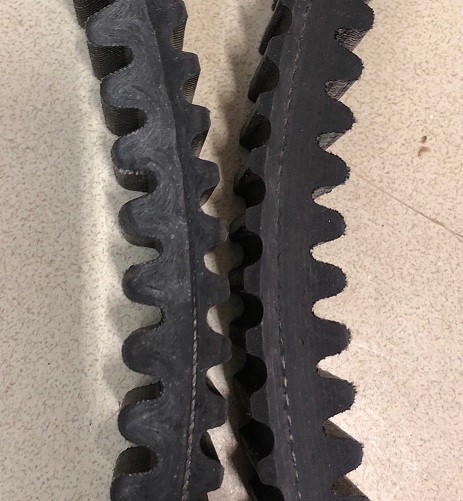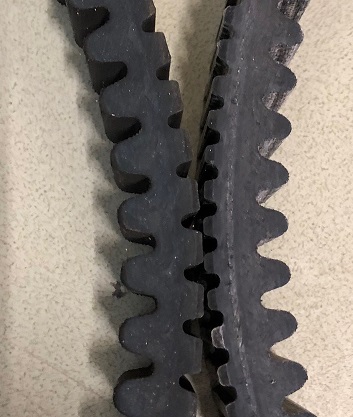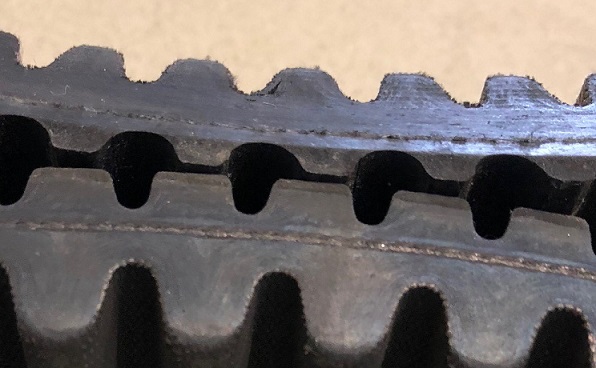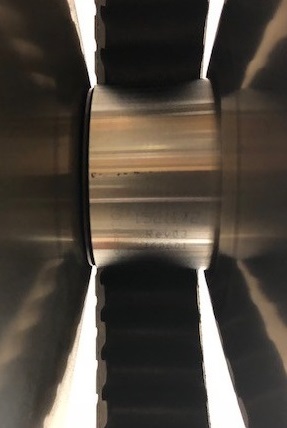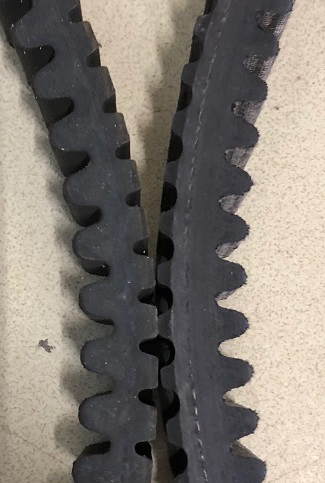A Deeper Explanation on the thickness of our Polaris Belts This is a more detailed article about the dimensions of our belts and the thickness of them, it can be rather confusing and sometimes I just want to say, "Hey we got this, put it on!!!" But you the customer deserve more info. We really hate to go into too much detail as competitors can just take what we are doing and then sell against us. I want to address a couple simple things that people ask me about the thickness of our belts. Depending on the vehicle the top to bottom of the belt thickness can be thicker or on some vehicles only the cross section is thicker. Also, on some, the belt appears wider than your OE too but it really is not. So lets talk about our STD belt and our Thick belt, that is the only ones used outside our Turbo and it is not under consideration here although it is about .028" thicker in the cross section. While on the turbo belt, even though no pics below of the turbo vs oe turbo the explanation below is the same for the way we are doing our turbo belt too. First lets start with pictures, below is a OE XP 1000 Belt compared to our Std belt. The top to bottom dimension in ours is slightly thinner than the OEM and the cross section meaning the part between the valley of the ribs on top and bottom are the same. Our cogs shape and size is different on both top and bottom and of course the construction of the belt itself is different. Width wise it is the same too. So the slightly thinner overall aids in cooling for a duner, the durability compared to OE does not change since the cross section stays the same. From our main belt dimension article, in this one application the XP 1000 comparing the OE belt with our Std belt we are extremely close to durability of the OE and in my opinion better!! LOL
Now a pic of our "Thick Belt" compared to a OE XP 1000 Belt. The top to bottom thickness is the same, the widths are the same, but look at the cross section, it is what is thicker. We achieve that by making our cogs top and bottom to a different dimension. Comparing the OE or our Std to our Thick belt, the cross section is roughly .050" thicker and this greatly increases durability and belt grip in slower riding conditions.
Below is a OE XP 1000 Ranger belt and the dimensions of it are very close to the Ranger 900, RZR 900 General etc, all those belts are thinner not only in cross section but top to bottom. So on all these models meaning every application we offer a belt for not counting the XP 1000 mentioned above and Turbo our belt is going to be thicker over all, the cross section a whole lot thicker and width at the top rib wider, however technically not wider and I think I covered that in the main belt dimension article and also further down in this article. Also as you can see, our top and bottom ribs are different as well. On these belts our STD belt will be thicker than the OE belt but due to the small and larger number of ribs will be cooler.
Below is a shot showing you how wide this belt is compared to the OE Ranger belt on top width, as you can see the top width is not that much.
The picture below, shows how the belt and clutch are on a angle, so that added top width is higher in the plane than the OE's top width is, so this is why we say, technically it is not wider at the top. Hope that makes sense.
Below just for comparison sake is our Thick Belt compared to the OE Ranger 1000 belt above, you should be able to see the additional .050" thicker cross section over our STD belt. This belt could be used in all these applications but it would be severe overkill.
Where all these belts are the same in width and length meaning in circumference is at the line where the belt does the work, at pitch width. This area is going to be the same on all these belts and the lengths are going to be the same. We simply manipulate the area above and below this line to achieve better performance in grip and durability. I hope this has cleared up some of our dimension questions we get. What we will not discuss is the actual construction, as that is proprietary to Hunterworks, we don't want to discuss who makes it either. For anyone that figures the who out, that does not change anything as we have them make these to our specs. Just like Polaris, they have the makers make them to theirs, no different. |
|



































































































